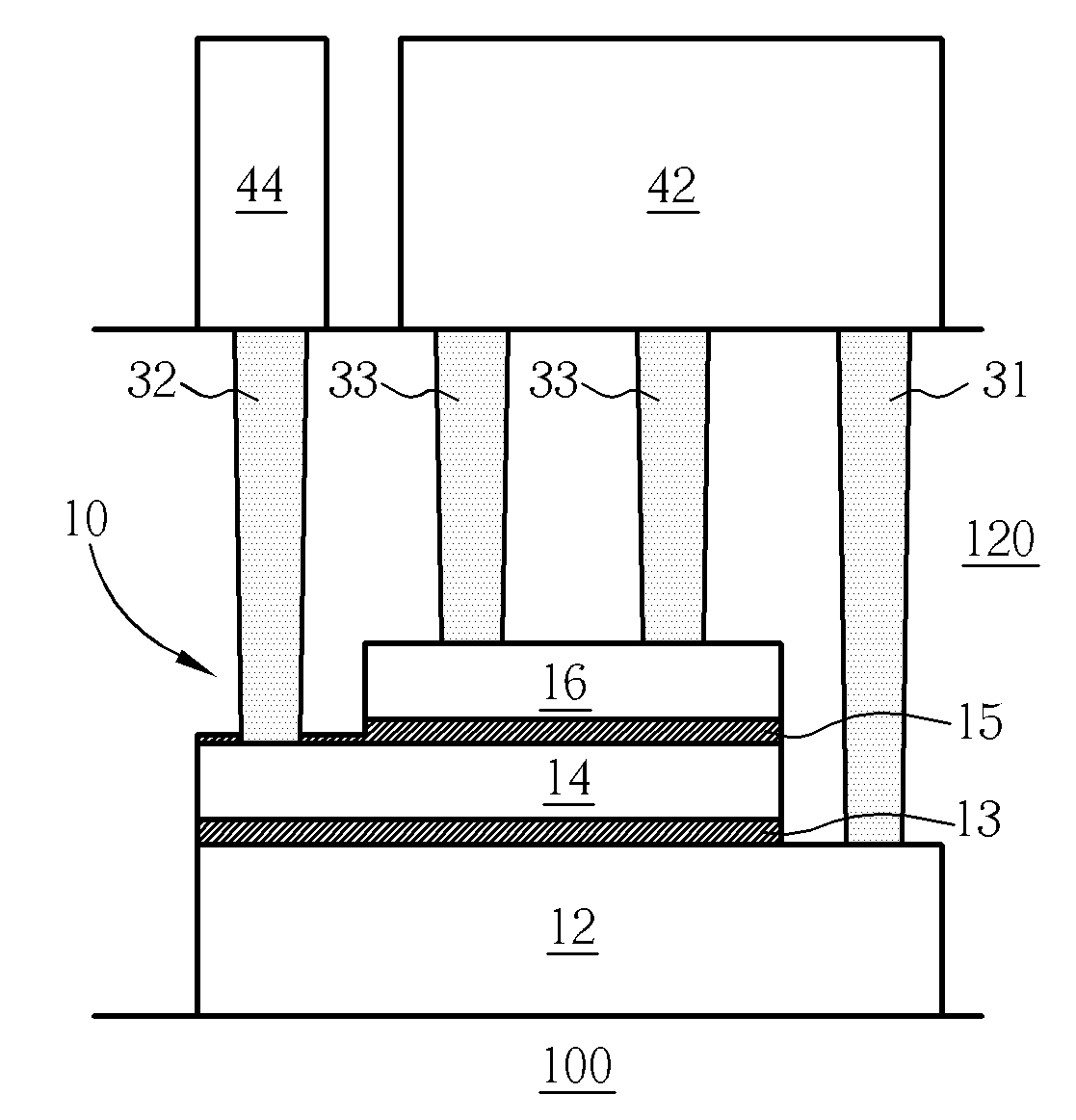Poly-Insulator-Poly Capacitor and Fabrication Method for Making the Same
- Summary
- Abstract
- Description
- Claims
- Application Information
AI Technical Summary
Benefits of technology
Problems solved by technology
Method used
Image
Examples
Embodiment Construction
[0021] Please refer to FIG. 3. FIG. 3 is a perspective diagram illustrating a PIP capacitor 10 according to a preferred embodiment of the present invention. As shown in FIG. 3, the PIP capacitor 10 includes a first polysilicon plate 12, which maybe defined on a base layer 100 such as an interpoly dielectric layer, but not limited thereto. A second polysilicon plate 14, which is thinner than the first polysilicon plate 12, is stacked above the first polysilicon plate 12 and is electrically isolated from the first polysilicon plate 12 with a first capacitor dielectric layer 13. A third polysilicon plate 16 is stacked above the second polysilicon plate 14 and is electrically isolated from the second polysilicon plate 14 with a second capacitor dielectric layer 15. Preferably, the first polysilicon plate 12 is composed of a polysilicon layer or a combination of a polysilicon layer and a polycide layer, such as a tungsten silicide (WSi) layer. The second polysilicon plate 14 is composed ...
PUM
 Login to View More
Login to View More Abstract
Description
Claims
Application Information
 Login to View More
Login to View More - R&D
- Intellectual Property
- Life Sciences
- Materials
- Tech Scout
- Unparalleled Data Quality
- Higher Quality Content
- 60% Fewer Hallucinations
Browse by: Latest US Patents, China's latest patents, Technical Efficacy Thesaurus, Application Domain, Technology Topic, Popular Technical Reports.
© 2025 PatSnap. All rights reserved.Legal|Privacy policy|Modern Slavery Act Transparency Statement|Sitemap|About US| Contact US: help@patsnap.com



